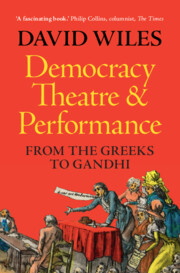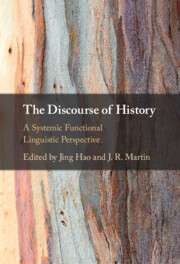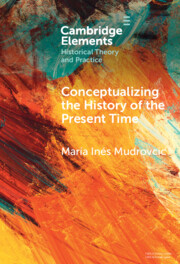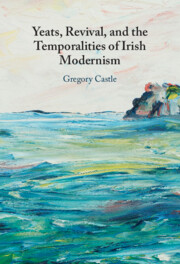1207 results
33 - Queer Southern Literature and the Dirty South
- from Space and the Regional Imaginary of Queer Literature
-
-
- Book:
- The Cambridge History of Queer American Literature
- Published online:
- 17 May 2024
- Print publication:
- 06 June 2024, pp 613-627
-
- Chapter
- Export citation
Chapter 1 - The Life
- from Part I - Life and Times
-
-
- Book:
- Goethe in Context
- Published online:
- 16 May 2024
- Print publication:
- 23 May 2024, pp 9-19
-
- Chapter
- Export citation
7 - Conclusion
- from Part III - Thinking Alternatives
-
- Book:
- Sustainable Development, International Law, and a Turn to African Legal Cosmologies
- Published online:
- 16 May 2024
- Print publication:
- 23 May 2024, pp 278-292
-
- Chapter
- Export citation
Chapter 14 - Phenomenological Psychopathology of Mood Disorders
-
-
- Book:
- Clinical Textbook of Mood Disorders
- Published online:
- 16 May 2024
- Print publication:
- 23 May 2024, pp 141-150
-
- Chapter
- Export citation
4 - Interpreting History: Valuing Events in a Postcolonial World
-
-
- Book:
- The Discourse of History
- Published online:
- 16 May 2024
- Print publication:
- 23 May 2024, pp 73-94
-
- Chapter
- Export citation

Democracy, Theatre and Performance
- From the Greeks to Gandhi
-
- Published online:
- 17 May 2024
- Print publication:
- 27 June 2024

The Discourse of History
- A Systemic Functional Linguistic Perspective
-
- Published online:
- 16 May 2024
- Print publication:
- 23 May 2024
Chapter 2 - American Futures
-
-
- Book:
- The Cambridge Companion to American Utopian Literature and Culture since 1945
- Published online:
- 09 May 2024
- Print publication:
- 16 May 2024, pp 41-61
-
- Chapter
- Export citation
1 - Introduction
-
- Book:
- How Government Built America
- Published online:
- 08 May 2024
- Print publication:
- 09 May 2024, pp 1-6
-
- Chapter
- Export citation
Chapter 1 - Introduction
-
- Book:
- The Theology of the Book of Samuel
- Published online:
- 08 May 2024
- Print publication:
- 09 May 2024, pp 1-13
-
- Chapter
- Export citation
Chapter 22 - History
- from Part IV - Genres
-
-
- Book:
- Jonathan Swift in Context
- Published online:
- 02 May 2024
- Print publication:
- 09 May 2024, pp 173-180
-
- Chapter
- Export citation

Conceptualizing the History of the Present Time
-
- Published online:
- 03 May 2024
- Print publication:
- 30 May 2024
-
- Element
- Export citation
1 - History of Central Banking
- from Part I - The Theoretical Foundations
-
- Book:
- Reconsidering Central Bank Independence
- Published online:
- 25 April 2024
- Print publication:
- 02 May 2024, pp 3-18
-
- Chapter
- Export citation
Chapter 20 - Adult Mental Health Services
-
-
- Book:
- Seminars in General Adult Psychiatry
- Published online:
- 04 April 2024
- Print publication:
- 18 April 2024, pp 767-804
-
- Chapter
- Export citation
Chapter 1 - Solitude Is Not Just for Hermits, Poets, and Billionaires
-
- Book:
- Solitude
- Published online:
- 24 March 2024
- Print publication:
- 18 April 2024, pp 11-33
-
- Chapter
-
- You have access
- HTML
- Export citation
Introduction
-
- Book:
- Clinical and Diagnostic Virology
- Published online:
- 11 April 2024
- Print publication:
- 18 April 2024, pp 1-6
-
- Chapter
- Export citation
Chapter 6 - “They Had Changed Their Throats”
-
- Book:
- Yeats, Revival, and the Temporalities of Irish Modernism
- Published online:
- 11 April 2024
- Print publication:
- 18 April 2024, pp 188-232
-
- Chapter
- Export citation

Yeats, Revival, and the Temporalities of Irish Modernism
-
- Published online:
- 11 April 2024
- Print publication:
- 18 April 2024
Chapter 17 - History and the Spirit of Revivalism
- from Part III - Culture and Society
-
-
- Book:
- Vaughan Williams in Context
- Published online:
- 28 March 2024
- Print publication:
- 04 April 2024, pp 143-150
-
- Chapter
- Export citation
2 - A History of Misinformation
- from Part I - Setting the Stage
-
- Book:
- The Psychology of Misinformation
- Published online:
- 28 March 2024
- Print publication:
- 04 April 2024, pp 22-34
-
- Chapter
-
- You have access
- HTML
- Export citation



